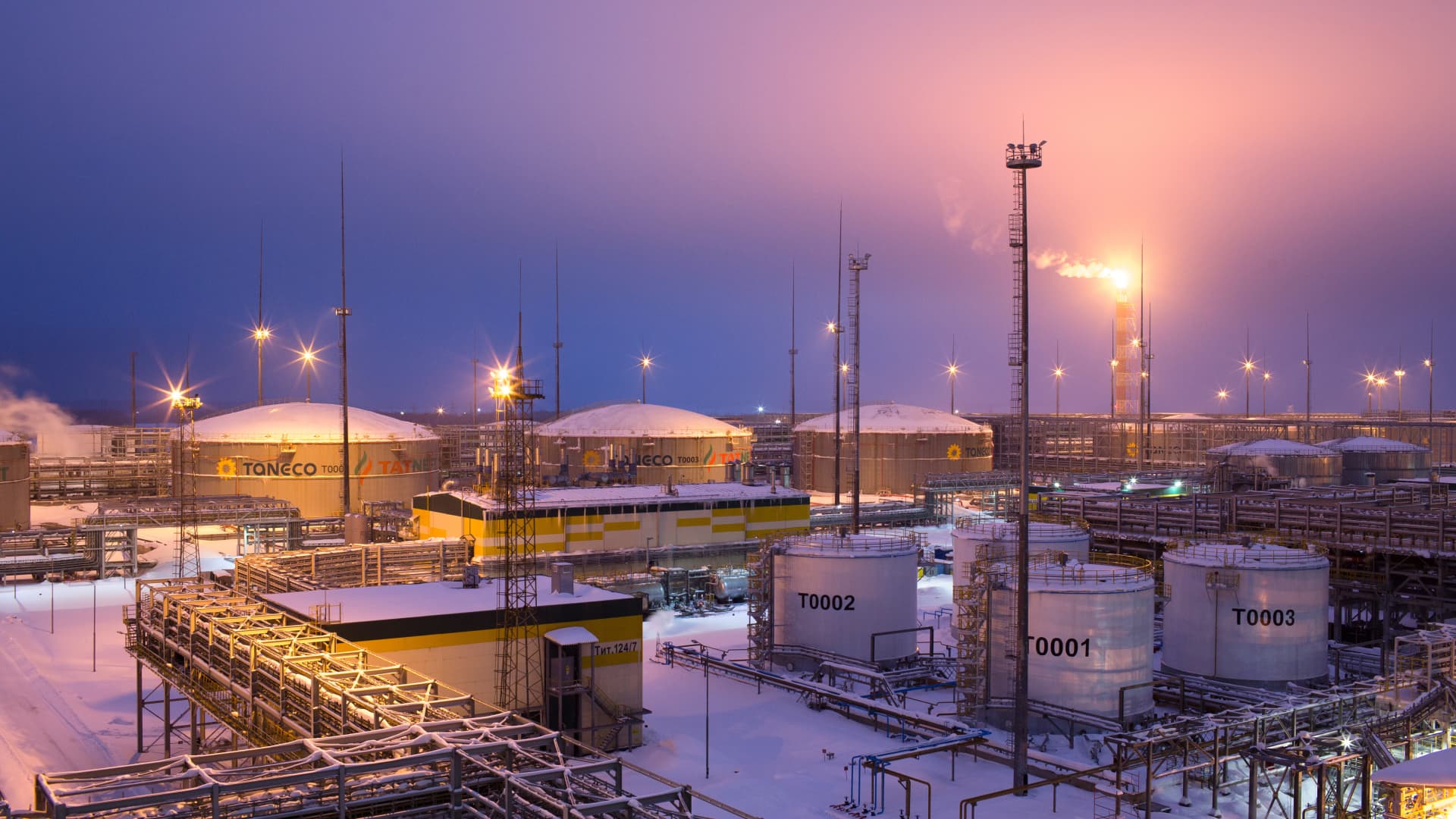What was that again about wind and solar power being unreliable? Some energy pundits are still tossing that old ball around, but meanwhile savvy investors are plowing billions into new energy storage facilities that spit out clean kilowatts on demand. Like they say, money talks, and in a fitting twist the latest example comes from the Golden State, California.
Massive New Energy Storage Facility For The Golden State
California has plenty of both wind and solar, and it also has an ambitious renewable energy goal, which makes it the perfect spot to launch ambitious clean power projects such as massive new energy storage facilities.
California is also the perfect place to demonstrate how existing, climate-killing fossil energy sites can transition rapidly into climate action sites. After all, the state has played a key role in the US fossil energy industry, despite its image as an environmental warrior. It is riddled with oil and gas wells in addition to fossil power plants and existing transmission lines, and some of them are ripe for the picking by clean energy investors.
The new energy storage facility is a case in point. The diversified energy firm Vistra is behind the project. They are pitching it as the largest battery-type storage facility of its kind, and they are not kidding.
Located in Moss Landing near Monterey, California, the facility got under way in 2020 and it just completed an expansion, bringing its capacity to 400 megawatts or 1,600 megawatt-hours, depending on who’s counting and why. According to Vistra, the expansion kicked Moss Landing into world’s record territory.
That’s nothing. So far, work on the first two phases has progressed ahead of schedule, and Vistra is looking forward to another expansion that will bring the plant up to 1,500 megawatts, which translates into 6,000 megawatt-hours.
For those of you keeping score at home, the State of California, Pacific Gas and Electric Company, LG Energy Solution, and the engineering and construction firm Burns & McDonnell also have a hand in the project.
The Moss Landing Energy Storage Project Is A Good Start…
Land use issues are already threatening to slow down the clean energy transition, so any use of existing energy-related sites is an advantage that helps speed up the transition to clean power. Large-scale battery facilities like the Moss Landing project enable more wind and solar development on the grid, so the impact ripples out far beyond the site itself.
Vistra CEO Curt Morgan explains that “what’s great about this particular site is that it has the space to support even further expansion – up to 1,500 MW/6,000 MWh – while responsibly utilizing our existing site infrastructure, including existing transmission lines and grid interconnection.”
The battery array is housed inside an existing turbine building at the site, which is almost as long as three football fields, so just imagine if all those batteries involved digging up a pollinator habitat instead of occupying pre-built space.
As for what has been on the site previously, Moss Landing has a fossil energy pedigree of historic dimensions. The story started back in 1950, when a power plant built by Pacific Gas & Electric went into operation. PG&E was the whole story for almost 50 years, until 1998 when a series of transactions from Duke Energy to LS General Finance to Dynegy landed Moss Landing in the lap of Vistra, by dint of a 2018 merger with Dynegy.
Vistra has gotten loads of good press for the Moss Landing energy storage facility, which comes under its Vistra Zero branch. Other energy storage projects in the works in California and Texas, where Vistra Zero also doing a lot of solar. They also count the 2,300 megawatt, 1990’s-era Comanche Peak nuclear power plant in Texas among its zero emission assets, though a pesky fire at the facility has raised some red flags relating to the stowing of all your energy eggs in one basket. As of this writing the plant’s two units are scheduled for decommissioning between 2030 and 2033.
…But Vistra Has A Long Row To Hoe
On the down side, the Moss Landing energy storage project is part of a broader plan for leveraging batteries to store electricity from fossil sources in addition to wind and solar, for at least as long as fossils power the grid.
In that regard, Vistra has much to do and little time before the climate piper must be paid. The Moss Landing energy facility is dwarfed by the holdings of Vistra subsidiary Luminant, which counts 39,000 megawatts worth of generation capacity across 12 states, counting Comanche Peak.
The Luminant portfolio includes some solar, but as of 2019 its solar holdings barely registered on a pie chart. Natural gas and coal still share the throne, with nuclear holding on to a somewhat meaty sliver.
Nevertheless, Vistra’s interest in wind power has been coming along at a nice clip, and other signs of a strong uptick in renewable energy activity have been growing this year, partly spurred by the settlement of a complaint brought by Sierra Club. The settlement involves closing Vistra’s Joppa coal and gas power plant in Illinois, and it provides the company with an opportunity to lobby for the proposed “Illinois Coal to Solar and Energy Storage Act.”
If passed, the bill would help shepherd along Vistra’s plans for converting several other coal power plants in Illinois to renewable energy. The company has already set aside $550 million for the effort, which would involve a total of nine sites, 300 megawatts in solar capacity, and 175 megawatts in battery-type energy storage. Vistra also plans a similar fate for its coal power plants in Ohio.
If you’re thinking the Joppa site will soon be plastered with solar panels, guess again. Apparently the site is not suited for conversion to utility scale solar power. A 45-megawatt battery will go there instead, which is enough to serve about 22,500 typical homes.
Beyond Batteries For Long Duration Energy Storage
That figure of 22,500 homes sounds impressive, but the big question is for how long. Battery-type energy storage systems typically only last just a few hours. That is enough to power a grid past peak demand periods without having to dial up additional fossil energy capacity, typically in the form of natural gas. However, four hours is not nearly long enough to replace all existing “peaker” plants.
Our friends over at Power Magazine recently cited a study by the National Renewable Energy Laboratory, which indicates that about 150 gigawatts in fossil energy peaker plant capacity is on track to retire within the next 20 years in the US. Battery-type energy storage facilities could only replace about 28 of those gigawatts under a four-hour scenario.
To replace the rest, something that lasts longer than four hours or so is needed. The US Department of Energy has been hammering away at the problem under its DAYS “Duration Added to ElectricitY Storage” program. The acronym is a bit of a stretch, and so is the endeavor. DAYS is looking for a minimum of 10 hours of energy storage, preferably reaching 100 hours or more.
That might sound like a tough nut to crack considering the state of battery-type storage. However, pumped storage hydropower already fits the bill, proving that it is possible. The problem with pumped hydro is the narrow range of options for site selection.
Flow batteries are another water-based option that allows for a much wider range of deployment. The water is contained in tanks and the whole thing can be packed into a a relatively small container, or a larger facility depending on the use case.
Another option is to take the gravity-based underpinnings of pumped hydropower and apply them to solid objects instead of water.
One interesting mashup in that area is the company Energy Vault, which is considering the use of recycled wind turbine blades in a gravity-based storage system that resembles a sideways Ferris wheel.
The compressed air energy storage field is also growing out and scaling up, so keep an eye on that, along with thermal systems and other interesting storage solutions.
Follow me on Twitter @TinaMCasey.
Photo: Moss Landing energy storage facility courtesy of Vistra.
Appreciate CleanTechnica’s originality? Consider becoming a CleanTechnica Member, Supporter, Technician, or Ambassador — or a patron on Patreon.



